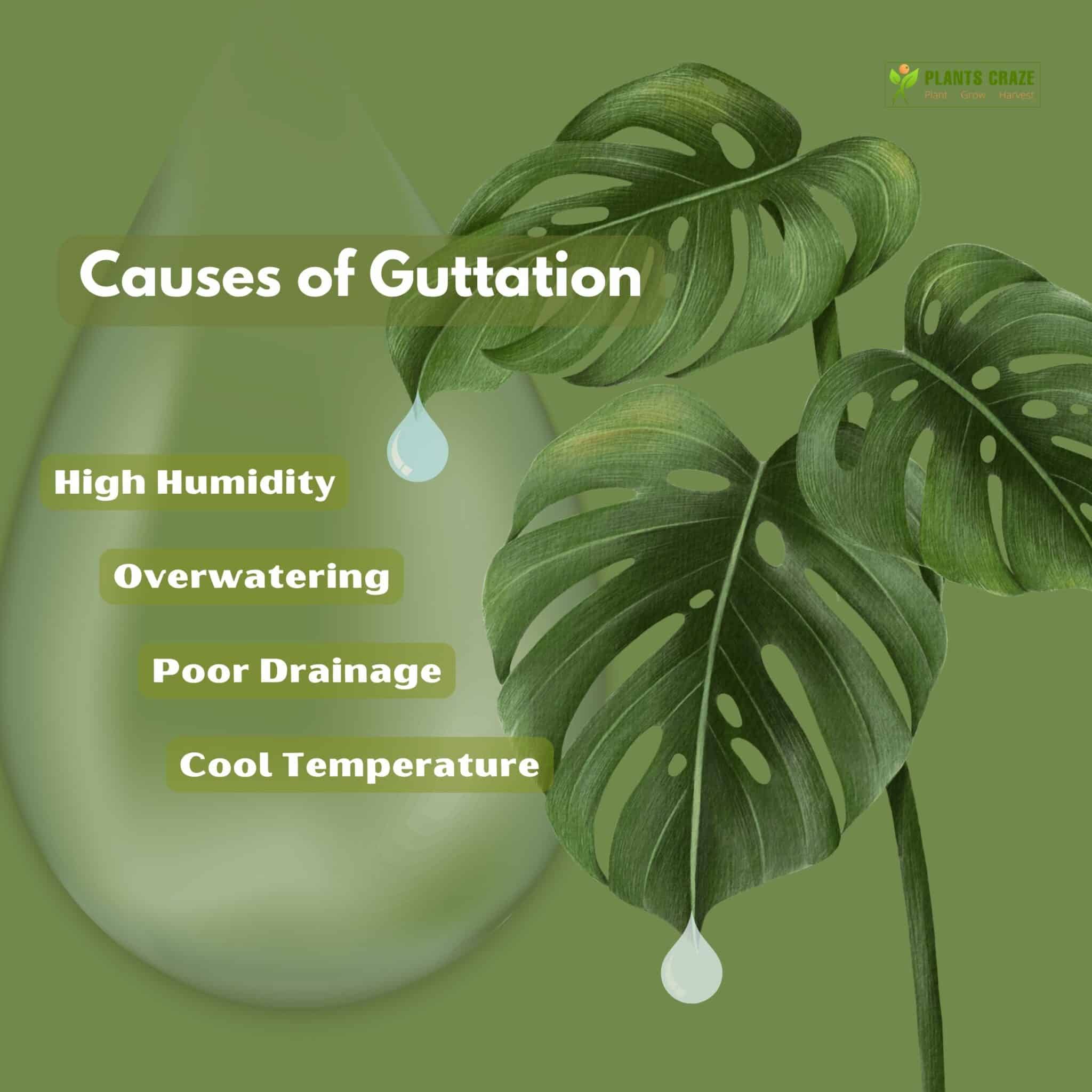Sometimes, your Monstera leaves strangely drip water. You may think that your plant is crying out of agony or such sorts, but occasionally, it is instead a familiar phenomenon!
Although a naturally occurring condition in Monstera, guttation can take place if your Monstera plant is under stress.
Learn the science behind this unusual spectacle and how to overcome it so that your plant won’t get teary leaves again!
Table of Contents Show
Why Do Monstera Leaves Drip Water?
Generally, in the morning, you may see strange water drips hanging at the tips and edges of your Monstera leaves.
Your Monstera leaves drip water from special microscopic pores called hydathodes. These hydathodes are also present at the tips or around the edges of some plant leaves besides Monstera.
The water drops you see are sap from the xylem vessels inside the plant leaves.

Additionally, the process of guttation takes place in many vascular plants, commonly during the night when the roots absorb more water than they can transpire from the leaves.
What Is Guttation & How Does It Work?
The process of guttation is a play between the plant roots and leaves.
When the soil is too wet, the roots absorb water and push it up to the leaves, from where it evaporates. This day-and-night occurring process is called transpiration.
The phenomenon of transpiration is further boosted by low surrounding humidity, as the water escapes from the foliage to balance its cellular water content with the moisture in the ambient air.
As a result, we see these drips of water on the leaves of some plants, which is called guttation!
Symptoms Of Guttation In Monstera
Guttation is usually visible in Monstera in the morning, but the process occurs at night.
Also, guttation takes place through other special pores as the stomata closes after dark.
The plant also exhibits some unusual symptoms during the process, which are as follows.
- Formation of water drops at the tip and margins of the leaves.
- The drops may be transparent, milky, or slightly murky.
- Also, the drops may contain sticky substances, which are certain “plant compounds.”
- Further, Monstera leaves wilt or droop during the phenomenon of guttation.
- Additionally, the tip and margins of the leaves may turn yellow or brown.
Common Causes Of Guttation In Monstera
There are several main reasons for guttation in Monstera, which we will discuss below.
1. Overwatering
If you overwater your Monstera plants, the plant roots take up much water, increasing the root pressure.
Due to this, the roots push the water up to the leaves, and the drops form around the tips and margins.
2. High Humidity
When the environment is too humid, the plant cannot open its stomata to release the excess water during the transpiration.
Hence, the water takes a different route, and the plant expels the moisture from the hydathodes.
3. Poor Soil Drainage
Monstera loves well-draining soil and a pot with drainage holes that can seep excess water.
Hence, if the soil is moisture-heavy, Monsteras continuously pull the soil water, after which the drops form.

4. Excessive Fertilizer Application
When you apply excessive fertilizer to the soil, the roots take in the minerals, increasing the osmotic potential.
Hence, the roots absorb excessive soil water to balance the minerals inside the cell, which the plant pushes out from the leaves.
5. Plant Age
Young plants guttate more than adult plants as they have fewer and underdeveloped stomata.
Hence, instead of transpiring the moisture from the stomata, they use the hydathodes to exudate the excess water.
6. Cool Temperature
When the surrounding temperature is cool during rainfall or winter, the air becomes highly humid.
So, the stomata closes, and the plant guttates the extra water instead of transpiring.
Tips To Prevent Guttation In Monstera
Although guttation is a natural process, it can happen in excess if the plant faces any of the above-mentioned problems.
Hence, you should investigate the cause first before taking any precautions. Some ways to prevent excess guttation in Monstera are as follows.
- Plan a watering schedule for your Monstera plant every 1-2 weeks in spring and summer.
- Water your Monstera after the top 1-3 inches of soil dries up during fall and winter.
- Choose well-draining soil for Monstera to prevent water-logging.
- Prick or drill some holes at the bottom of the pot to aerate the soil.
- Use an indoor dehumidifier to suppress the humidity levels around your Monstera.
- Apply a monthly dose of balanced fertilizer throughout spring and summer.
From Editorial Team
Reuse the excess water!
You can collect the guttated water by placing your Monstera in a drip tray and reuse the water in the next watering schedule.
Also, you need not use a humidity tray for your Monstera plant if the guttation occurs regularly. You can moisturize the leaves with gentle sprays in summer.
